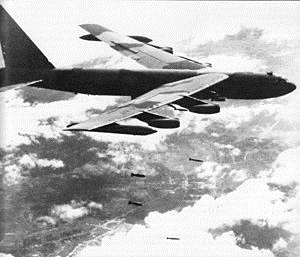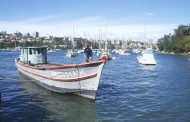1973 North Vietnamese surrender
https://www.youtube.com/watch?v=hREju-S-a-k
A lecture by Ted Gunderson, FBI (ret.) in which he reports on the 1973 North Vietnamese surrender. Perhaps he meant the spring of 72, as that is when Operation Linebacker was launched to halt the Nguyen Hue Offensive (the Easter Offensive) by the PAVN, which it did, because by the end of January 1973, the Paris Peace Accords were signed and finalized the following June.
VC xin “ĐẦU HÀNG VÔ ĐIỀU KIỆN” năm 1973
Operation Linebacker
As Vietnamization progressed, American forces began handing off responsibility for fighting the North Vietnamese to the Army of the Republic of Vietnam (ARVN). In the wake of ARVN failures in 1971, the North Vietnamese government elected to move forward with conventional offensives the following year. Beginning in March 1972, theEaster Offensive saw the People’s Army of Vietnam (PAVN) attack across the Demilitarized Zone (DMZ) as well as east from Laos and south from Cambodia. In each case, PAVN forces made gains driving back the opposition.
Operation Linebacker – Debating the American Response:
Concerned about the situation, President Richard Nixon initially desired to order three days of B-52 Stratofortress strikes against Hanoi and Haiphong. In an effort to preserve the Strategic Arms Limitation Talks, National Security Advisor Dr. Henry Kissinger dissuaded Nixon from this approach as he believed it would escalate the situation and alienate the Soviet Union. Instead, Nixon moved forward with authorizing more limited strikes and directed that additional aircraft be dispatched to the region.
As PAVN forces continued to make gains, Nixon elected to push forward with a large escalation of air attacks. This was due to both the deteriorating situation on the ground and the need to preserve American prestige prior to a summit meeting with Soviet Premier Leonid Brezhnev. To support the campaign, the US Seventh Air Force continued to receive additional aircraft, including large numbers of F-4 Phantom IIsand F-105 Thunderchiefs, while the US Navy’s Task Force 77 was increased to four carriers. On April 5, American aircraft began striking targets north of the 20th Parallel as part of Operation Freedom Train.
Operation Linebacker – Freedom Train & Pocket Money:
On April 10, the first large B-52 raid struck North Vietnam and hit targets around Vinh. Two days later, Nixon began allowing strikes against Hanoi and Haiphong. American air attacks largely focused on transportation and logistics targets, though Nixon, unlike his predecessor, delegated operational planning to his commanders in the field. On April 20, Kissinger met with Brezhnev in Moscow and convinced the Soviet leader to reduce military aid to North Vietnam. Unwilling to risk an improving relationship with Washington, Brezhnev also pressured Hanoi to negotiate with the Americans.
This led to a meeting in Paris on May 2 between Kissinger and Hanoi’s chief negotiator Le Duc Tho. Sensing victory, the North Vietnamese envoy was unwilling to deal and effectively insulted Kissinger. Angered by this meeting and the loss of Quang Tri City, Nixon further upped the ante and directed that the North Vietnamese coast by mined. Moving forward on May 8, US Navy aircraft penetrated Haiphong harbor as part of Operation Pocket Money. Laying mines, they withdrew and additional aircraft conducted similar missions over the next three days.
Operation Linebacker – Striking at the North:
Though both the Soviets and Chinese frowned on the mining, they did not take active steps to protest it. With the North Vietnamese coast effectively closed to maritime traffic, Nixon ordered a new air interdiction campaign, dubbed Operation Linebacker, to commence. This was to focus on suppressing North Vietnamese air defenses as well as destroying marshalling yards, storage facilities, transshipment points, bridges, and rolling stock. Commencing on May 10, Linebacker saw Seventh Air Force and Task Force 77 conduct 414 sorties against enemy targets.
In the war’s single heaviest day of aerial combat, four MiG-21s and seven MiG-17s were downed in exchange for two F-4s. During the early days of the operation, the US Navy’s Lieutenant Randy “Duke” Cunningham and his radar intercept officer, Lieutenant (j.g.) William P. Driscoll, became the first American aces of the conflict when they downed a MiG-17 (their third kill of the day). Striking targets across North Vietnam, Operation Linebacker saw the first widespread use of precision-guided munitions.
This advance in technology aided American aircraft in dropping seventeen major bridges between the Chinese border and Haiphong in May. Switching to supply depots and petroleum storage facilities, the Linebacker attacks began to have a telling effect on the battlefield as PAVN forces saw a 70% drop in supplies through the end of June. The air attacks, coupled with increasing ARVN resolve saw the Easter Offensive slow and finally stop. Unhampered by the targeting restrictions that had plagued the earlier Operation Rolling Thunder, Linebacker saw American aircraft pound enemy targets into August.
Operation Linebacker – Aftermath:
With imports into North Vietnam down 35-50% and with PAVN forces stalled, Hanoi became willing to resume talks and make concessions. As a result, Nixon ordered bombing above the 20th Parallel to cease on October 23, effectively ending Operation Linebacker. In the course of the campaign, American forces lost 134 aircraft to all causes while downing 63 enemy fighters. Considered a success, Operation Linebacker was critical to halting the Easter Offensive and damaging PAVN forces. An effective interdiction campaign, it began a new era of aerial warfare with the mass introduction of precision-guided munitions. Despite Kissinger’s proclamation that “Peace is at hand,” American aircraft were compelled to return to North Vietnam in December. Flying Operation Linebacker II, they again struck targets in an attempt to force North Vietnamese to resume talks.













































